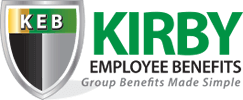
What are Level-Funded Health Plans?
The passage of the Affordable Care Act (ACA) means businesses with two or more full-time or full-time equivalent employees must provide health insurance coverage for those employees. As a business grows, its owner may look to transition from using a fully insured health plan to using self-insurance to avoid the high cost of health insurance premiums. Switching without a transition period, however, can cause a shock to the business’s bottom line if many employees experience illness or injury in a single year. Using level-funded health plans bridges that gap.

How Level Funded Health Plans Help
Some businesses try this using just stop-loss insurance, but that insurance places a cap on total annual losses, which doesn’t help the employer when it must pay many claims at once.
Level-funded health plans offer an intermediate, hybrid solution that lets an employer drop their fully insured health care plan without switching completely self-insuring. It does this by offering the employer a health insurance plan that uses a flat rate to cover estimated claim costs. The level-funded package also includes stop-loss insurance to cover the employer when health care costs exceed the estimated amount. Premiums also include the plan’s administration costs.
Using the level-funded health plans can result in a refund at the end of the year for the business. Conversely, if claims cost more than the estimated amount, the carrier typically has contractual language where the excess is not charged to the employer. The stop-loss coverage mitigates risk in employer losses though since if the claims do exceed a certain amount, it pays.
When the business conducts its contract negotiations with the insurance carrier, it needs to negotiate refund contract language specifically. Some insurance carriers attempt to use a standard contract that requires the employer to carry over any refund amount to the following year instead of getting the money back.
Level-Funded Health Plans for Small and Medium Businesses
Although the government offers tax credits for small businesses to help fund the premium payments, many employers turn to level-funded health plans. According to the Kaiser Family Foundation’s 2020 Employer Health Benefits Survey, 16 percent of small businesses switched to level-funded health plans. The Kaiser survey results show that the level-funded solution doesn’t only work as an option for big businesses.
If you feel ready to move your business closer to self-insurance, contact us for more information on implementing level-funded health plans. Kirby Employee Benefits can help you find the right carrier and contract for your business.
